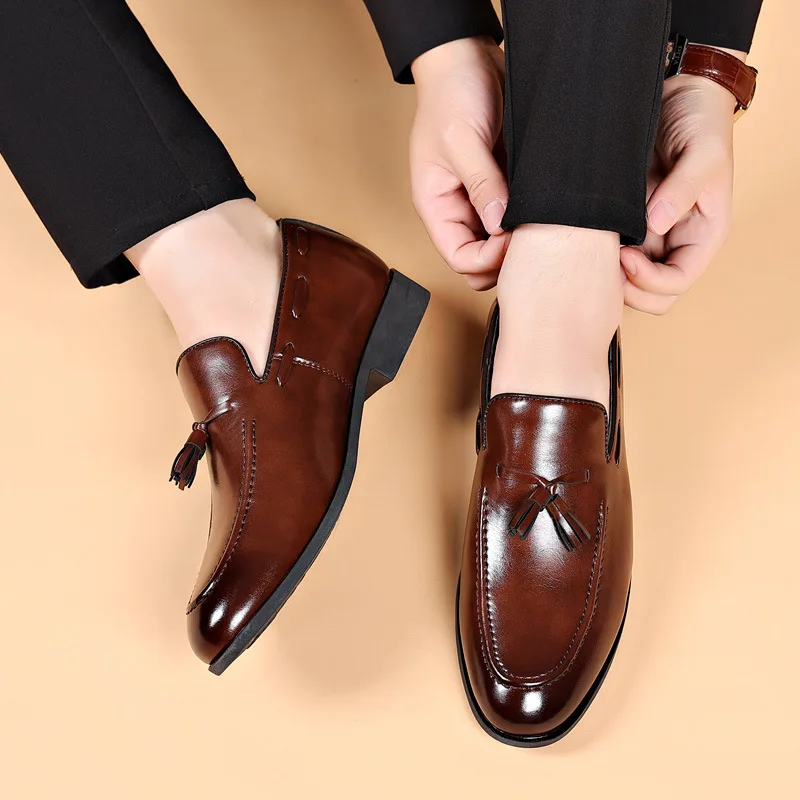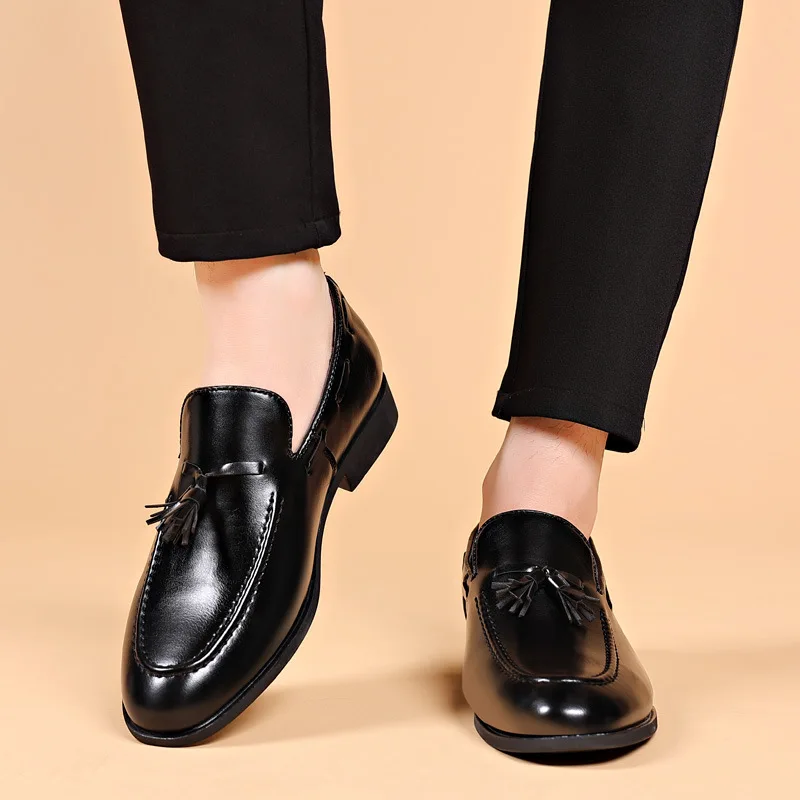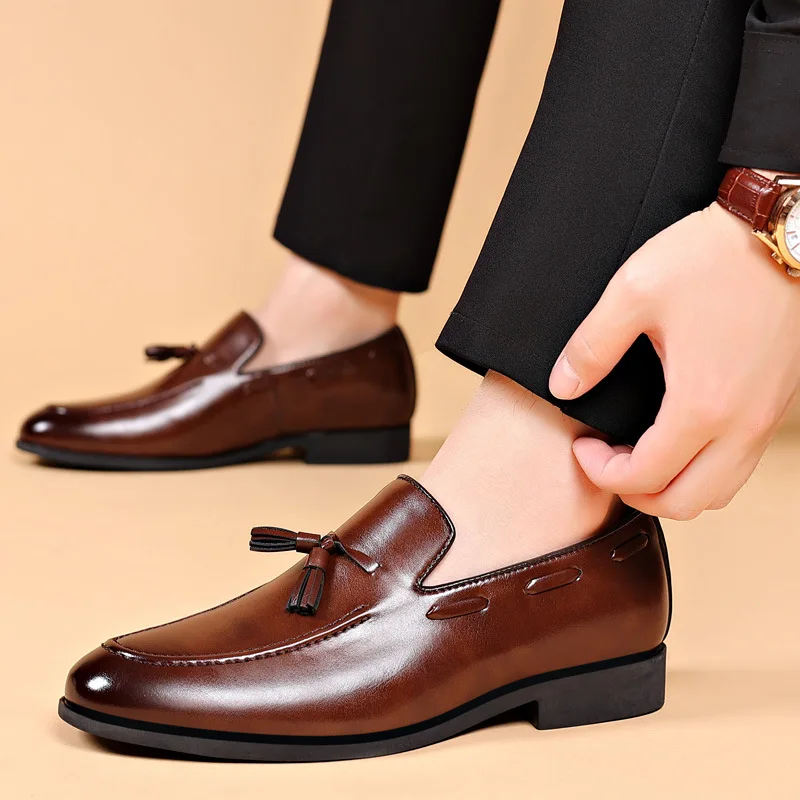A Brief History of Leather Soles
The history of leather sole dress shoes traces back thousands of years. Ancient civilizations recognized leather’s durability and breathability, making it ideal for footwear. Consider the iconic Greek gods depicted in art; their leather sandals were not just artistic choices, but also reflections of the times. Over centuries, leather soles didn’t just protect feet—they became fashion statements, symbolizing status and style.

Ancient Footwear to Fashion Statements
Initially, leather for soles was sourced from various animals and treated using age-old methods. As time passed, the sophistication of these methods improved. The Egyptians, Romans, and Greeks all wore leather-soled shoes, elevating them beyond mere function to markers of eminence. By the Middle Ages, European nobility often donned intricately designed leather shoes as a sign of their high status.
Progression of Tanning Technology and Commercial Production
Entering the 18th century, advancements in leather tanning and machinery allowed for consistent and commercial production of leather soles. This period marked a turning point, as leather sole dress shoes became more accessible and began to embody a blend of tradition, formality, and practicality. The evolution of leather tanning played a significant role in maintaining the popularity of leather soles in dress shoes up to the modern day.
Leather vs Rubber Sole Shoes
When making a decision between leather and rubber sole dress shoes, a number of factors come into play. These include durability, comfort, elegance, and weight. Each type of sole comes with its distinct advantages and it’s important for shoe buyers to understand these to make informed choices.
A Comparative Overview
Leather sole shoes are steeped in tradition and known for their breathability and elegance. Rubber sole shoes, on the other hand, are prized for their durability and resistance to various weather conditions. Both have unique benefits that cater to different needs and preferences.
Durability Factors
Rubber soles win in terms of durability. They withstand harsh conditions and don’t wear out as quickly as leather soles. Leather soles, while resilient, are more suited for formal or light use. They are also more sensitive to wet conditions, which can accelerate wear.

Comfort Levels
Rubber soles offer immediate flexibility and shock absorption, making them comfortable from the first wear. Leather soles may start off stiffer but conform to the wearer’s feet for a custom fit over time. This could lead to heightened comfort after a break-in period.
Elegance and Aesthetics
Leather sole dress shoes hold the crown for elegance. They offer a sleek, sophisticated look that enhances formal attire. Rubber soles are often seen as more casual but can come in low-profile designs that are still suitable for dressier occasions.
Weight Considerations
In terms of weight, rubber soles are usually lighter, offering a more relaxed wear, especially in casual settings. Leather soles are not necessarily heavy but do not offer the same ultralight feel as some rubber options.
Characteristics of Leather Sole Dress Shoes
Leather sole dress shoes have distinct qualities that stand the test of time. They are the epitome of classic footwear with benefits deeply rooted in their material and design.
Natural and Breathable Material
Leather soles are made from natural material that allows feet to breathe. This quality reduces moisture and keeps feet dry. Breathability is key to foot health and comfort, especially during long wears.
Traditional Style and Sustainability
A leather sole epitomizes traditional craftsmanship and timeless style. They offer a connection to shoemaking heritage and are often preferred for their classic appearance. Beyond aesthetics, they are sustainable. Leather is a natural by-product and in many cases can be sourced responsibly, adding to its appeal for eco-conscious consumers.
Customization with Wear
Over time, leather soles mold to the shape of the wearer’s feet. This creates a custom fit that enhances comfort. The sole’s wear pattern reflects the individual’s walk, making each pair unique. This customization aspect is a prized feature of leather sole dress shoes.
Advantages of Rubber Sole Dress Shoes
Rubber sole dress shoes offer distinct benefits over their leather counterparts. They are often the choice for those seeking durable, weather-resistant footwear that also provides instant comfort. Below, we’ll explore the specific advantages that rubber soles bring to the table.

Durability and Weather Resistance
Rubber soles are tough. They withstand rough use and harsh conditions better than leather soles. Wet weather? No problem. Rubber soles resist rain and snow, keeping your feet dry. They also last longer. While leather might wear down over time, rubber keeps going strong, supporting your every step.
Immediate Comfort and Variety of Styles
Comfort comes fast with rubber soles. They flex with ease, offering a cushioned step right out of the box. No lengthy break-in period needed. Plus, they come in many styles. From sleek to sporty, rubber soles can suit any look. They blend with formal shoes or casual kicks, giving you choices for any event.
Common Rubber Sole Varieties
There are many types of rubber soles. Some are thick and cushioned; others, thin and flexible. High-density rubber soles are strong and stable. Gumlite soles, made by Vibram, mix rubber and EVA for a light, grippy feel. Then there’s blown rubber, airy and soft, almost like wearing sneakers. Each type has its use, from rugged hikes to classy dinners.
Sole Durability: Leather and Rubber Compared
When choosing dress shoes, sole durability is key. Let’s look at how leather and rubber soles stack up.
The Longevity of Rubber Soles
Rubber soles are tough and last long. They withstand daily wear better than leather. Designed for persistence, they prevail in durability. You wear them for years; they keep going strong without much wear.
Weather Effects on Leather Soles
Leather soles don’t fare well in wet weather. Rain and snow can damage leather, causing faster wear. They need care to last in harsh conditions. Dry them properly to maintain their shape and extend life.
Comfort and Elegance: What Sets Leather Soles Apart
Leather soles in dress shoes offer a unique blend of comfort and style. Over time, they shape to your feet, becoming more comfortable. Elegant in appearance, they add a touch of formality to your outfit.
Stiffness vs Shock Absorption
Leather soles start off stiff, but they adapt. They become more flexible with each wear. Rubber soles, in contrast, have built-in shock absorption. They provide immediate comfort and are softer to the foot from the start.
Formality and Elegance of Leather Soles
Leather soles are synonymous with formal attire. They bring an air of sophistication to dress shoes. Their polished look and sleek design signal professionalism and elegance.
Casual Versatility of Rubber Soles
Rubber soles offer a casual edge. They fit many styles, from relaxed to semi-formal. Their wide range of designs makes them versatile for different settings and occasions.
Replacing and Choosing the Right Sole
Choosing the right sole for your dress shoes can be crucial to their longevity and your comfort. Knowing when to replace a worn sole and what type to choose is essential for maintaining your footwear.
Replacement Tips for Leather and Rubber Soles
Leather soles may become worn and less protective over time. If your leather-soled shoes show signs of heavy wear or loss of shape, consider replacing them. For replacing rubber soles, look for thinning or smooth areas where traction is compromised. When replacing soles, opt for quality materials that match the shoe’s original design and purpose. Reliable cobblers can suggest the best options, like Vibram for rubber soles or traditional leather for dress shoes.
Here are some quick replacement tips:
- Regularly check soles for signs of wear and damage.
- Choose a trusted cobbler with good reviews and quality materials.
- Consider hybrid soles that combine leather’s elegance with rubber’s durability.
- Remember that replacements can extend your shoes’ life and maintain their original look.
Selecting the Right Sole for Different Occasions
For formal occasions, leather soles are often preferred due to their classic look and elegance. They complement dress attire and can be polished to a high shine. Rubber soles are more suited for casual or outdoor events where their flexibility and weather resistance come in handy. They offer more cushioning and grip, ideal for active use.
Consider these factors when choosing soles:
- The event or environment in which you’ll wear the shoes.
- The level of comfort you require.
- Durability needs based on frequency and type of use.
- The style and appearance you want to achieve.
Having both leather and rubber-soled shoes in your wardrobe allows you to be prepared for any occasion.
